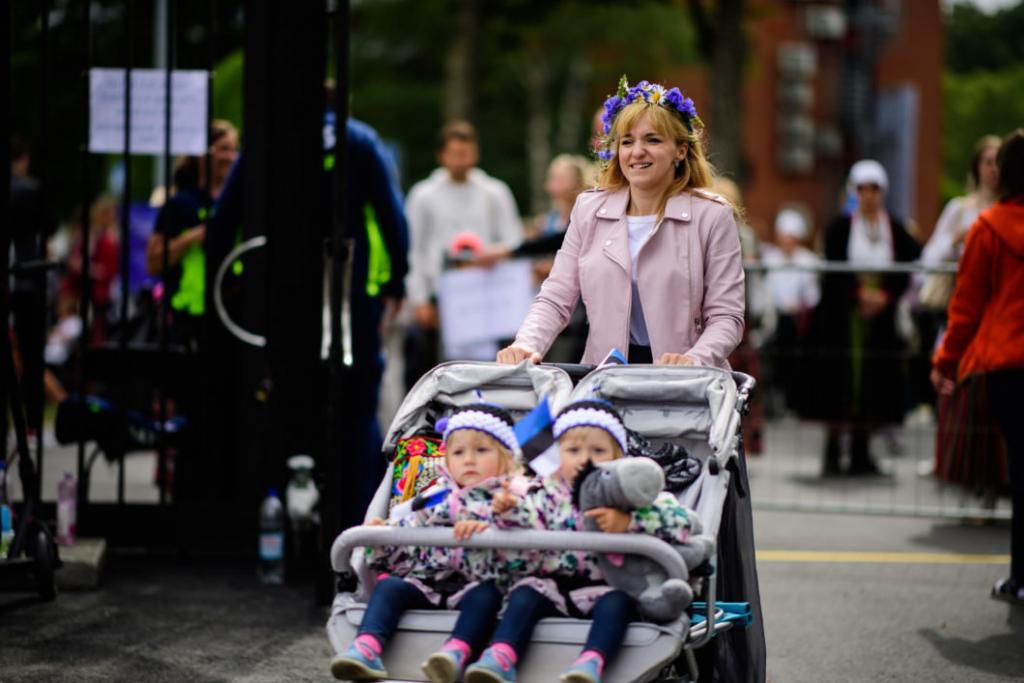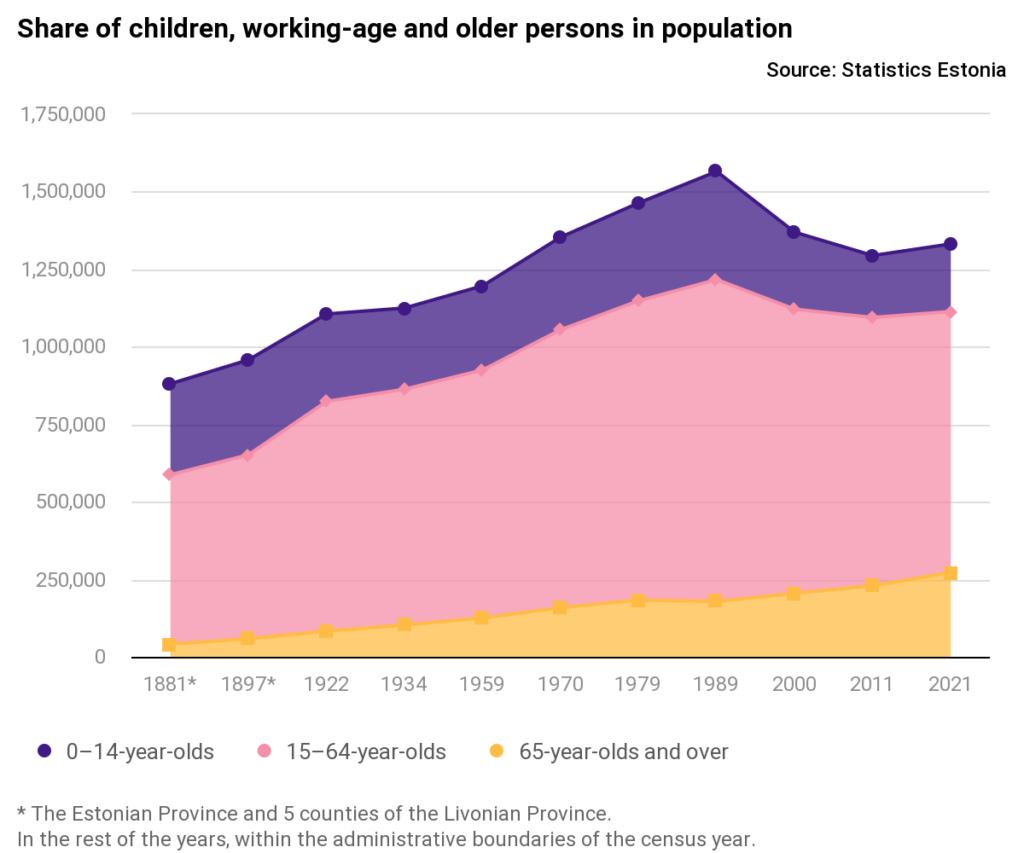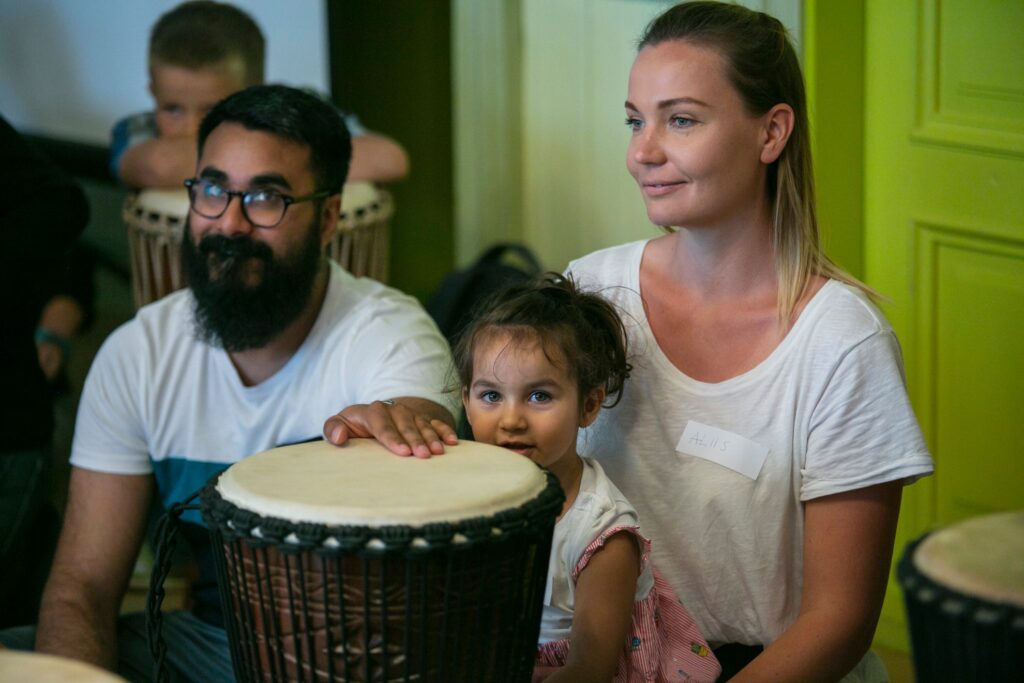The data collected from registers in the 2021 census reveal that in last ten years, Estonia’s population has grown, people live longer and the number of working-age persons has fallen; Estonia has seen a rise in the number of ethnic nationalities, countries of citizenship, mother tongues, and countries of birth, as well as an increase in the number of Estonians.
On 31 December 2021, there were 1,331,824 people living permanently in Estonia, which is 2.9% more than at the same time ten years ago. Men accounted for 47.6% of the population and their share had increased by 1.2 percentage points, while the share of women was 52.4%. The average inhabitant of Estonia was 42.2 years old, or 1.4 years older than the average inhabitant in 2011.
“The positive side of an ageing population is that the number of people aged 80 and over has increased – in other words, our people are living longer and this is particularly noticeable for men,” Terje Trasberg, a leading analyst at Statistics Estonia, the country’s official statistics agency, said in a statement.
“Compared with the time of the previous census, men live on average three years longer and women 1.7 years longer. The problem here is the proportion of women of child-bearing age, which has declined, but this has been mitigated to some extent by the increase in the number of children born per woman and the increase in the number of children.”

About a fifth of the people living in Estonia are kids
Over the past decade, Estonia has seen an increase in both the number of children (0-14-year-olds) and the number of older people (65+), whereas the number of working-age people has fallen. There are 217,792 children living permanently in Estonia, which is 9% more than ten years ago. The total number of older people is 272,164, or 18.6% more than in the previous census. The number of working-age people is 841,868 – a decrease by 2.7%, Statistics Estonia said.
There were 259,341 children aged 0-17 living in Estonia as of 31 December 2021. This was 9.1% more than ten years ago. Children constitute 19.5% of the total population of Estonia. The share of children is the lowest in Hiiu County and Ida-Viru County and the highest in Harju County and Tartu County.
There were 26,656 children aged under two, 71,779 children aged two to six, 57,200 children aged seven to ten and 62,157 children aged 11-14 living in Estonia.

More people live in urban settlements
Exactly 815,003 people (61.2% of the population) lived in urban settlements, which is 4.2% more than in 2011. The number of people living in small urban settlements had increased by 12.8% in ten years.
According to Trasberg, the urban sprawl has been on the rise. “The urge to move to bigger towns has stabilised or is coming to an end, but rural areas have not gained much from this – especially families with children increasingly prefer small towns around big cities,” she said.
According to the census data, compared with 2011, Estonia’s population is much more diverse and the number of people of Estonian ethnic nationality has also risen.
“Over the past 10 years, the number of ethnic nationalities, countries of citizenship and mother tongues has increased, but the share of Estonians has remained almost unchanged. The number of native speakers of Estonian has been stable as well. The number of Estonian citizens has increased, while the number of citizens of Russia and Belarus has decreased,” Trasberg noted.
There were people of 211 ethnic nationalities residing in Estonia, which was 31 more than 10 years ago. A total of 151 different citizenships were represented in Estonia – 33 more than 10 years earlier. 69.4% of people living in Estonia were of Estonian ethnic nationality – up from 68,3% 20 years ago.

More Latvians and Ukrainians in Estonia
In 10 years, the number of Estonians increased nearly 2%, the number of Russians decreased 3.4%, and the number of Belarusians fell by 7.7%. The number of Ukrainians increased by 23% (this statistic does not include war refugees who have arrived in Estonia after the moment of census) and the number of Latvians rose by 117%.
There were 243 different languages spoken as mother tongue in Estonia, which is 86 more than in 2011 and more than twice as many as in 2000. The proportion of Estonian as mother tongue has remained virtually unchanged in 20 years (about 68%).
The census of 2021 was carried out by combining a register-based census with a sample survey. The register-based census data collection ran from January to July 2022. The data were collected from approximately 30 registers.
The results of the census, published on 1 June 2022, are based on the census data retrieved from registers. The data collected with the survey are still being processed and analysed and Statistics Estonia will publish these results in November.

